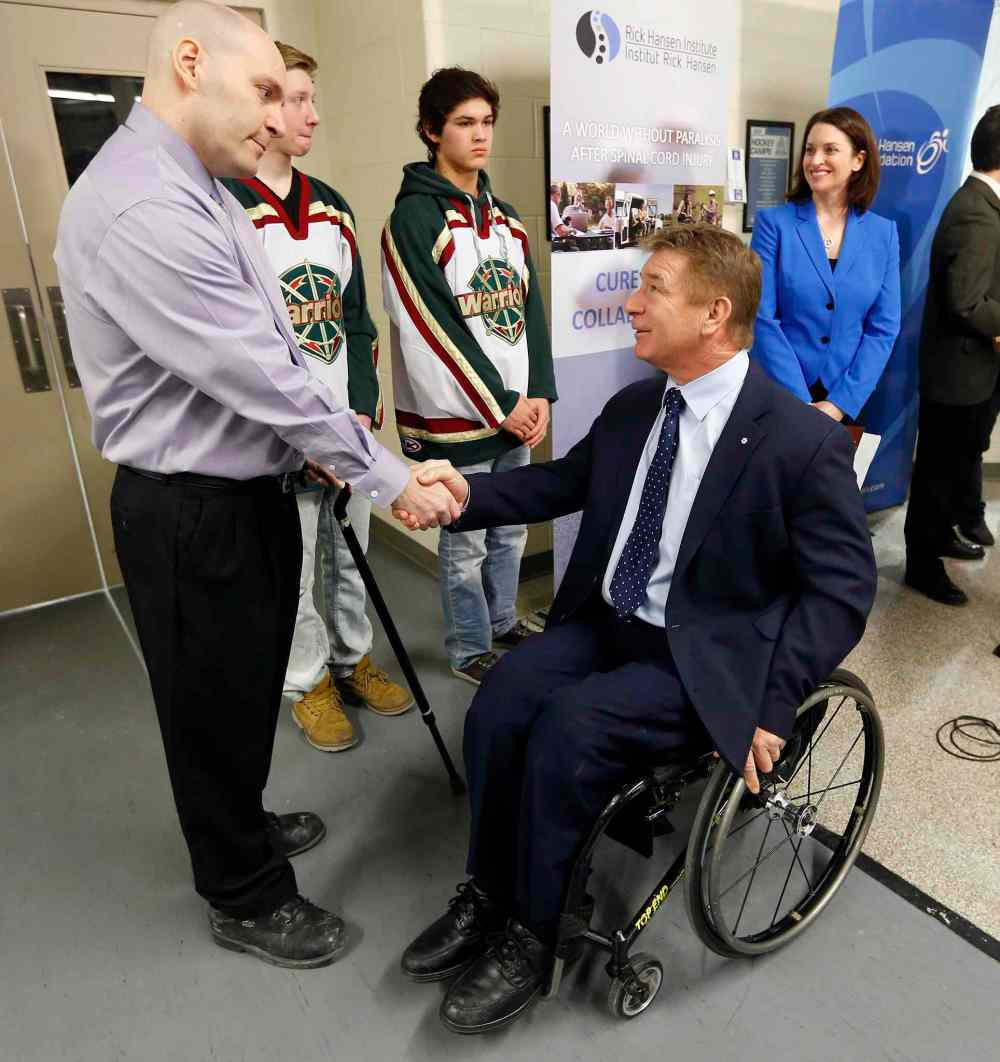Spinal-cord crusader hopeful
Cell regeneration, transplants excite famed Man in Motion
Advertisement
Read this article for free:
or
Already have an account? Log in here »
To continue reading, please subscribe:
Monthly Digital Subscription
$0 for the first 4 weeks*
- Enjoy unlimited reading on winnipegfreepress.com
- Read the E-Edition, our digital replica newspaper
- Access News Break, our award-winning app
- Play interactive puzzles
*No charge for 4 weeks then price increases to the regular rate of $19.00 plus GST every four weeks. Offer available to new and qualified returning subscribers only. Cancel any time.
Monthly Digital Subscription
$4.75/week*
- Enjoy unlimited reading on winnipegfreepress.com
- Read the E-Edition, our digital replica newspaper
- Access News Break, our award-winning app
- Play interactive puzzles
*Billed as $19 plus GST every four weeks. Cancel any time.
To continue reading, please subscribe:
Add Free Press access to your Brandon Sun subscription for only an additional
$1 for the first 4 weeks*
*Your next subscription payment will increase by $1.00 and you will be charged $16.99 plus GST for four weeks. After four weeks, your payment will increase to $23.99 plus GST every four weeks.
Read unlimited articles for free today:
or
Already have an account? Log in here »
Hey there, time traveller!
This article was published 05/03/2014 (4274 days ago), so information in it may no longer be current.
It’s been four decades since a 15-year-old Rick Hansen was thrown from the back of a pickup truck and suffered a serious spinal-cord injury that would leave him bound to a wheelchair.
In that time, Hansen, famous for his Man in Motion World Tour and charitable foundation, has seen great advances in research and treatment that give him hope that someone suffering a similar injury will someday enjoy a better fate.
“My belief is — and the reason I’m engaged in this work — is to hope that the legacy for the next generation of newly injured… is that they will walk again,” he said in Winnipeg Tuesday.

Hansen was on hand as the Manitoba government renewed its commitment to funding local spinal-cord research and patient support for another five years. Health Minister Erin Selby said the province would provide $3 million over the next five years. The money continues work that’s been going on since 2008.
“When I was injured, it took hours for the paramedics to arrive and to medevac me out to a local rural (B.C.) hospital,” Hansen said.
After several hospital transfers, he was finally taken by ambulance to a major hospital in the B.C.’s Lower Mainland, where he was operated on days later. There was no specialized treatment centre for spinal-cord injuries at the time.
Contrast that with the experience in many parts of Canada today: Treatment begins at the scene and the patient is transported to a spinal-cord centre. Surgery, where necessary, is done immediately. Drugs are given to reduce swelling and minimize damage.
The result has been better patient outcomes.
Hansen is particularly excited about the prospect of spinal-cord cell regeneration and cell transplants that could give many injured people the use of their legs again. His foundation assists some of this research as well as research trials and information-sharing among scientists.
At the time of the Man in Motion tour in the mid-1980s that saw Hansen wheel more than 40,000 kilometres through close to three dozen countries, there was skepticism about the possibility for spinal-cord cells to regenerate. Not any more, Hansen said.
“This is no longer a hypothetical possibility. The principles have been proven that the spinal cord can regrow, that we can create levels of new neural tissue. So now it’s possible,” he said.
One of the earliest spinal-cord research centres in North America was formed at the University of Manitoba in the late 1980s.
Dr. Larry Jordan, its founding director, said Tuesday it’s conceivable that in the next decade or so, someone who sustained an injury as severe as Hansen’s could walk again.
“I see no reason why not,” the U of M physiology professor said. “There’s been dramatic progress over the last several decades.”
larry.kusch@freepress.mb.ca


